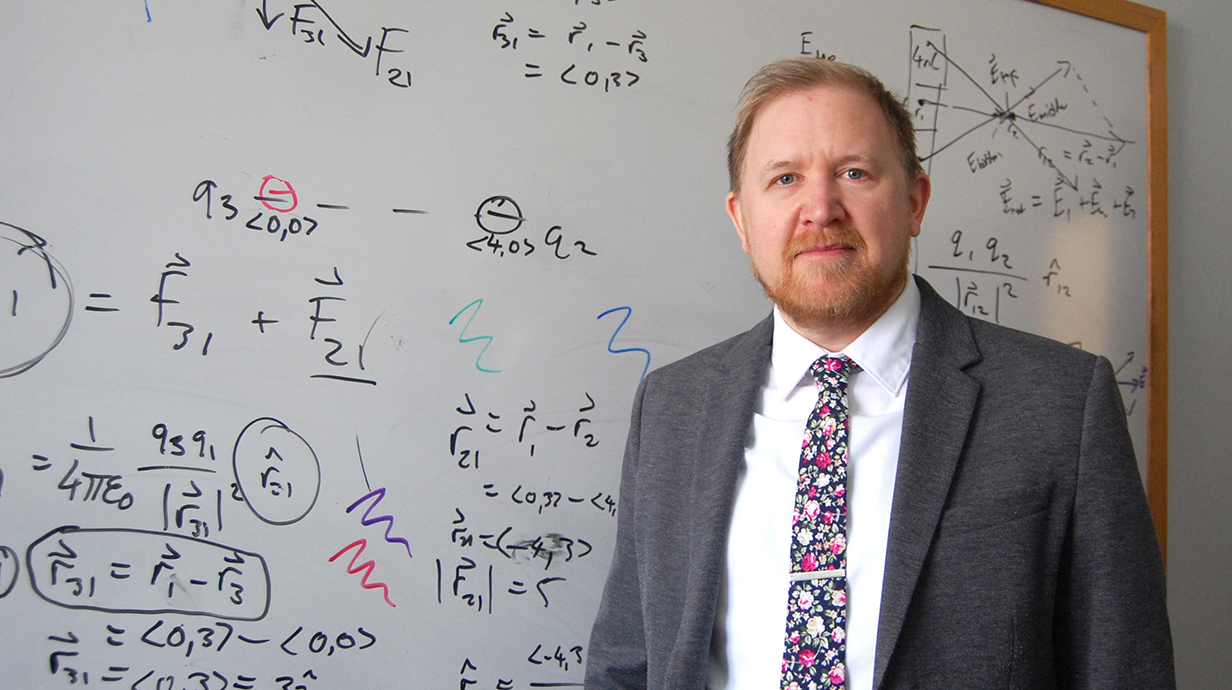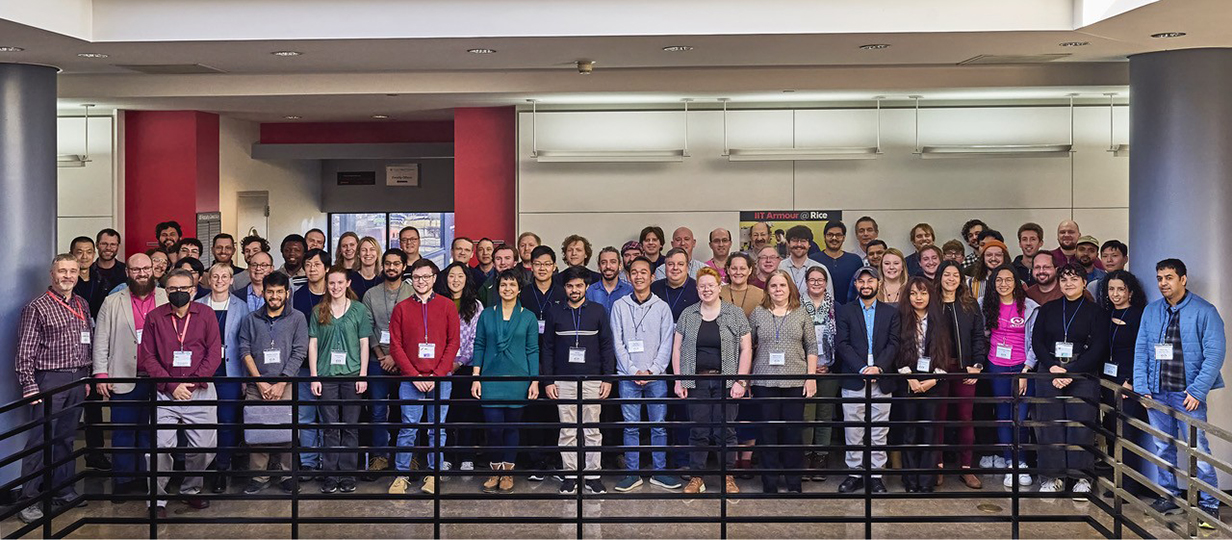International Collaboration Makes Headway in Neutrino Study
UM students take lead in international particle physics project

OXFORD, Miss. – Scientists are one step closer to understanding the behavior of one of the most abundant particles in the universe, and University of Mississippi students and researchers are helping lead the way.
The Fermi National Accelerator Laboratory's international NOvA collaboration presented new results this week about the shifting nature of neutrinos, a subatomic particle, at the Neutrino 2024 conference in Milan, Italy. Ole Miss professors and students have been a part of Fermilab's operations, part of the U.S. Department of Energy, for more than a decade.
"Our conclusions present the scientific community with the most precise measurement of its kind, putting us close to understanding one of our universe's greatest mysteries," said Luiz R. Prais, a third-year doctoral candidate in high-energy physics from Palmares Paulista, Brazil.

Luiz R. Prais (left) and Andrew Dye present their research at the Neutrino 2024 conference in Milan, Italy. Prais and Dye are both students in the university's neutrino physics research group, led by professor Gavin Davies. Submitted photo
Prais and Andrew Dye, a fifth-year doctoral candidate in the same field from Richmond Hill, Georgia, are both students in professor Gavin Davies' neutrino physics research group. Prais and Dye presented their findings Wednesday (June 19) at the conference.
"I am honored to be part of the leading analyzers behind this result, and could not be grateful enough to Dr. Davies for the mentoring during my Ph.D. project as I now approach the completion of my degree and get ready for the next step towards pushing the boundaries of human knowledge," Prais said.
The neutrino, commonly called the "ghost particle," is about 1,000 times smaller than an electron and nearly weightless, but it acts in mysterious ways. Three kinds, or "flavors," of neutrinos exist – electron, muon and tau – but no neutrino keeps its flavor for long.
Instead, neutrinos shift their flavor often, a process called oscillation. NOvA's most recent data suggests that researchers have found the most common pattern for a neutrino's change.
Groupings of three neutrinos are more than 87% more likely to arrange into two light flavors and one heavy one, according to the data.
To study this change, scientists at Fermilab began sending a beam of neutrinos 500 miles from Fermilab's National Accelerator Laboratory outside of Chicago to a 14,000-ton detector in Minnesota. The experiment began in 2014 and will continue through 2027.
The NOvA collaboration includes more than 200 scientists from 50 institutions and eight nations.
"Being a primary contributor to these latest results from the NOvA collaboration has been an honor and a privilege," Dye said. "These latest measurements on the larger of the two mass splittings have brought the field a significant step closer in solving the neutrino mass ordering puzzle.

Representatives of the NOvA collaboration gather at the Illinois Institute of Technology's Wheaton campus. More than 200 scientists from eight nations and 50 institutions – including the University of Mississippi – are part of the NOvA collaboration, which presented its most recent research this week in Milan, Italy. Photo by Yagmur Torun/Fermilab
"It's the goal of any academic to contribute something meaningful to their respective fields, and being afforded the opportunity to contribute to something as significant as this is incredible, especially as a graduate student."
Scientists do not know any practical application for neutrinos but hope that the particle's behavior can help them understand complex subjects such as black holes, antimatter and dark matter.
Despite the new data, the reason behind the neutrino's oscillations remains unclear, and more research is needed to better understand the elusive "ghost particle."
This research is supported by the Department of Energy grant DE-SC0021616.
Top: Gavin Davies. Photo by Clara Turnage/UM Marketing and Communications
By
Clara Turnage
Campus
Office, Department or Center
Published
June 20, 2024
